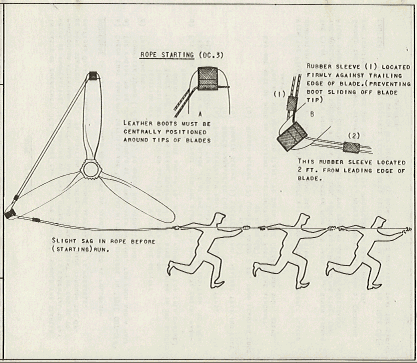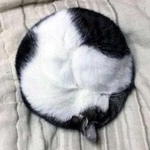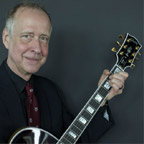|
Psion posted:High performance = high hp is a reasonable mistake to make if you aren't familiar with the ins and outs of engines. Hawker Sea Fury?
|
|
|
|

|
| # ? Apr 25, 2024 21:24 |
|
Psion posted:I asked a friend who's flown in Chicago and he says Center probably assumed this guy was a student once he said "Cessna 172" and decided to be nice; only the reason that it was late at night let him get away with it. During the day I'm sure they'd tell him to get the hell out, with good reason. Thing is, on what basis can they refuse you? They can refuse to let you transit the Bravo due to workload, but in this case you're not transiting, you're landing at the airport the Bravo exists for. They can send you to Milwaukee and back to try and fit you in to the sequence and make your life painful so you don't do it again, but they can't stop you from landing there. The only Bravo airport I can think of a GA pilot can't land at (at least not easily) is National Airport in Washington, DC. There it's theoretically possible, but probably not for a C-172. Lots of hoops like getting your "secret decoder ring" to file a flight plan to fly into the FRZ, departing from an appropriate gateway airport, and of course, the armed security officer on board to shoot the pilot and crash the plane if it gets too close to the White House.
|
|
|
|
The vertical stabilizer of a single engine propeller-driven aircraft general isn't generally installed parallel to the centerline, either. It's generally at a slight angle, which is to provide roughly the correct counter to the p-factor of the propeller at cruise speed and cruise power. Fun fact about jet turbines: due to the way air flows through them, a notional marshmallow allowed to enter the compressor would exit the turbine in roughly the same place, radially, as it entered, barring the random effects of bouncing off of compressor and turbine stators.
|
|
|
|
Fucknag posted:I've seen Cessnas come in to MCO (Orlando International) fairly often, but O'Hare is just a whole different level. A 182 landing at ATL: https://www.youtube.com/watch?v=WkhlQ30Ey7w
|
|
|
|
MrYenko posted:The vertical stabilizer of a single engine propeller-driven aircraft general isn't generally installed parallel to the centerline, either. It's generally at a slight angle, which is to provide roughly the correct counter to the p-factor of the propeller at cruise speed and cruise power. Not to mention the nice roasting it will receive in the process.
|
|
|
|
fordan posted:Thing is, on what basis can they refuse you? They can refuse to let you transit the Bravo due to workload, but in this case you're not transiting, you're landing at the airport the Bravo exists for. They can send you to Milwaukee and back to try and fit you in to the sequence and make your life painful so you don't do it again, but they can't stop you from landing there. "Workload depending" is a nice nebulous term. The airlines pay untold millions for their slots, and im sure the guys in the tower know what side their bread is buttered on.
|
|
|
|
david_a posted:I've heard that a Sopwith Camel (where the actual engine rotates) could turn 270 degrees right faster than it could do 90 degrees left. https://www.youtube.com/watch?v=8hJ1HDcMowk Who knew Zoolander was a WWI airplane? 
|
|
|
|
A Melted Tarp posted:"Workload depending" is a nice nebulous term. The airlines pay untold millions for their slots, and im sure the guys in the tower know what side their bread is buttered on. "this is your captain speaking, we are currently in a holding pattern cause two fucks in a cesna want to make a cool youtube video."
|
|
|
|
hobbesmaster posted:Clearly he's referring to race P-51s. :P Honestly I only guessed it was (not hoping to be right) because why would they use a plane that isn't that fast to fly in formation with a SR-71?
|
|
|
|
Fucknag posted:I've seen Cessnas come in to MCO (Orlando International) fairly often, but O'Hare is just a whole different level. Smallest thing I've seen at LAX was this Lancair:  Also a Cessna 310 once.
|
|
|
|
david_a posted:I've heard that a Sopwith Camel (where the actual engine rotates) could turn 270 degrees right faster than it could do 90 degrees left. Holy poo poo, I didn't know rotary engines like these were a thing  https://www.youtube.com/watch?v=u3DXEsC4Pq8
|
|
|
|
yeah, they also reached peak development in WWI because the only way to increase power output was to make them spin faster. And at that point they start using more power to spin the engine itself than can be transferred to the prop. http://en.wikipedia.org/wiki/Rotary_engine
|
|
|
|
david_a posted:Whoa. I always assumed planes with two engines had them spin in different directions. Although I guess that would make them different engines, huh? quote:The Hornet used "slimline" Rolls-Royce Merlin engines with engine ancillaries repositioned to minimise frontal area and drag. It was unusual for a British design in having propellers that rotated in opposite directions; the two engine crankshafts rotated the same direction, but the Merlin 131 added an idler gear to reverse its propellor's rotation (to clockwise, viewed from the front). This cancelled the torque effect of two propellers turning in the same direction that had affected earlier designs (such as the Mosquito). It also reduced adverse yaw caused by aileron trim corrections and generally provided more stable and predictable behaviour in flight. De Havilland tried props that rotated outward at the tops of their arcs (as in the P-38 Lightning), but this configuration blanketed the fin and reduced rudder effectiveness at low speeds, compromising ground handling; on production Hornets the conventionally rotating Merlin 130 was on the port wing with the Merlin 131 on the starboard.
|
|
|
|
A Melted Tarp posted:"Workload depending" is a nice nebulous term. The airlines pay untold millions for their slots, and im sure the guys in the tower know what side their bread is buttered on. More like trying to sequence a slow-as-gently caress C-172 into the airliner conga line to the runway is a pain in the rear end.
|
|
|
|
Fucknag posted:Dunno if that applies to turboprop engines, I imagine so since a lot of newer transports with them have counter-rotating props. It does indeed apply to turboprops. I fly Q400's for a living, and the fact that the engines rotate the same direction is very noticeable any time the power setting is changed. On takeoff, right rudder is required to keep the nose on the runway centerline as power is added, and thanks to an almost useless yaw damper, any power changes in flight require rudder pressure/trim to keep the aircraft from yawing left or right. I'd guess that the rudder trim knob is probably the single most operated control on the entire aircraft, to the point where one of the easiest ways to tell whether a particular airframe has gone through an overhaul recently is to look and see whether there's any paint left on the rudder trim knob.
|
|
|
|
fordan posted:More like trying to sequence a slow-as-gently caress C-172 into the airliner conga line to the runway is a pain in the rear end. Well in the video, the pilot said he called Approach on the telephone before departing and asked if he'd likely be accommodated during that time. He made the flight at night after peak traffic had died down and there were sufficient gaps in the sequence. Seems like he went about it in a very proactive way.
|
|
|
|
slidebite posted:What's the question? The cloud backdrop confusing you? It was. I thought I was missing a caption like "The Shuttle Discovery on its final mission, landing. The main bay doors were open for the final decent because the crew didn't give two fucks."
|
|
|
|
Wingnut Ninja posted:Speaking of shutting down engines, Thursday was interesting: Man I'm never talking about single engine situations again! Glad everything turned out alright.
|
|
|
|
Psion posted:
That, as far as I'm aware, would go to the Goodyear FG-2 Super Corsair powered by the 4360. I can't find which dash number of the engine, but most of them are 3000+ horsepower. (I know the Goodyear corsair is stretching the definition of "production," but there you have it.)
|
|
|
|
vessbot posted:That, as far as I'm aware, would go to the Goodyear FG-2 Super Corsair powered by the 4360. I can't find which dash number of the engine, but most of them are 3000+ horsepower. The Martin AM-1 Mauler used the Wasp Major as well, and was probably more "production" than the F2G, or any of the other late-war prototypes.
|
|
|
|
Inacio posted:Holy poo poo, I didn't know rotary engines like these were a thing Kilonum posted:yeah, they also reached peak development in WWI because the only way to increase power output was to make them spin faster. And at that point they start using more power to spin the engine itself than can be transferred to the prop. I really like the Siemens-Schuckert fighters; they dealt with the rotary engine torque problem by having the prop and engine counterrotate. 160hp rotary engine spinning 1800 rpm clockwise, driving a HUGE prop 900 rpm counter-clockwise through a gearbox. 
|
|
|
|
What were the starter setups on those big old piston setups? Doesn't look like a geared electric motor like on an automobile.
|
|
|
|
SyHopeful posted:What were the starter setups on those big old piston setups? Doesn't look like a geared electric motor like on an automobile. Whoever drew the shortest straw. edit: https://www.youtube.com/watch?v=MZM1kc_N770 drat those are loud Bondematt fucked around with this message at 04:08 on Oct 22, 2014 |
|
|
|
I bet any aircraft with roughly 40% of its total mass stuck on the extreme front and spinning at 1,200 RPM has some really interesting flight characteristics.
|
|
|
|
SyHopeful posted:What were the starter setups on those big old piston setups? Doesn't look like a geared electric motor like on an automobile. Somebody, who is not me, should effortpost the nonsense that is the Coffman starter.
|
|
|
|
A lot of them just had various flavors of starter motor, but a good few had inertia starers. Spin up a big flywheel, either by hand or (later) an electric motor, then engage a clutch to transfer the flywheel's energy to the engine to get it turned over. It let them use a much smaller (lighter!) motor and battery, which is pretty important on aircraft, especially early ones. Hand-crank: https://www.youtube.com/watch?v=3zXkVQnVmuo Electric: https://www.youtube.com/watch?v=FOAdA-cobKo Some of the older, low-compression engines could be started by hand: https://www.youtube.com/watch?v=lCrAjiwYGXc And some used shotgun shells to kick the engine over (  ) )https://www.youtube.com/watch?v=65qrzgbTTcQ
|
|
|
|
Sam Hall posted:I really like the Siemens-Schuckert fighters; they dealt with the rotary engine torque problem by having the prop and engine counterrotate. 160hp rotary engine spinning 1800 rpm clockwise, driving a HUGE prop 900 rpm counter-clockwise through a gearbox. How the gently caress is this less complicated than just turning the drat thing around and bolting the case to the front of the plane MrYenko posted:The Martin AM-1 Mauler used the Wasp Major as well, and was probably more "production" than the F2G, or any of the other late-war prototypes. Good call. MrYenko posted:The vertical stabilizer of a single engine propeller-driven aircraft general isn't generally installed parallel to the centerline, either. It's generally at a slight angle, which is to provide roughly the correct counter to the p-factor of the propeller at cruise speed and cruise power. ... which means that at higher speed and lower power, now this offset corrects for an effect that isn't there anymore (or, at least, is reduced) so the airplane will try to yaw right, requiring left rudder. This is more pronounced on some planes than others, but the Citabria/Decathlon one is a biggie as far as bugsmashers. Almost every student will head back to the airport at the end of their first acro lesson and try to correct for this yaw problem with aileron, putting us into a nice forward slip with about 5-10 degrees of left bank. They put a rudder on there for a reason!
|
|
|
|
Fucknag posted:A lot of them just had various flavors of starter motor, but a good few had inertia starers. Spin up a big flywheel, either by hand or (later) an electric motor, then engage a clutch to transfer the flywheel's energy to the engine to get it turned over. It let them use a much smaller (lighter!) motor and battery, which is pretty important on aircraft, especially early ones. https://www.youtube.com/watch?v=Ecosb5mSDwo Don't forget rope wrapped around the spinner pulled by truck. e: pulled by  https://www.youtube.com/watch?v=RbmUBGGCZhc ... or windmill start of rear engine from prop blast of front engine (the front engine itself is started with compressed nitrogen, an adaptation of the Coffman-type starter to make it easier on the engine by the elimination of shock) ... or, pneumatic starter that dumps compressed air right into the cylinders. This is how Russian M-14 engines (such as on the Yak 52) are started. ... or... this! https://www.youtube.com/watch?v=t9xS4tFhrTw vessbot fucked around with this message at 05:33 on Oct 22, 2014 |
|
|
|
The Ferret King posted:Well in the video, the pilot said he called Approach on the telephone before departing and asked if he'd likely be accommodated during that time. He made the flight at night after peak traffic had died down and there were sufficient gaps in the sequence. What accomodations for a small plane like that are there at O'Hare?
|
|
|
|
Fucknag posted:
Starting via powder cartridge isn't just for pistons! https://www.youtube.com/watch?v=OGDG3iTYMPY
|
|
|
|
luminalflux posted:What accomodations for a small plane like that are there at O'Hare? There's probably an FBO where the pilots can hang out, get fuel, etc. I haven't watched the video (I'm at work) but it sounds like they asked for "full stop, taxi back" meaning they landed then taxied back to depart immediately. I landed at MSP in an Arrow to pick someone up at the fbo. They were able to slip us into the arrivals on a super short pattern and I don't remember getting any attitude from the controllers. two_beer_bishes fucked around with this message at 05:57 on Oct 22, 2014 |
|
|
|
vessbot posted:Fairey Gannet What the hell was the designer of that thing smoking? wikipedia posted:Fairey selected an engine based on the Armstrong Siddeley Mamba: the Double Mamba(or "Twin Mamba"), basically two Mambas mounted side-by-side and coupled through a common gearbox to coaxial contra-rotating propellers. Power was transmitted from each engine by a torsion shaft which was engaged through a series of sun, planet, epicyclic and spur gears to give a suitable reduction ratio and correct propeller-shaft rotation.
|
|
|
|
You may also recognize the sound of the starter engaging as the sound of the Millennium Falcon's hyperdrive failing to start  Most of the sounds in Star Wars, like all of the space combat in the movie, are ripped straight out of old WWII reels. hobbesmaster posted:I wonder what the alpha of that F-8 is. Probably not that bad since he doesn't have the wings popped up.
|
|
|
|
fordan posted:Thing is, on what basis can they refuse you? It's been covered, but yeah I would expect a response along the lines of "get real, our pattern is full for literally the next 8 hours. Stay out of class B, thanks." Psion fucked around with this message at 06:34 on Oct 22, 2014 |
|
|
|
vessbot posted:How the gently caress is this less complicated than just turning the drat thing around and bolting the case to the front of the plane In a rotary engine, the engine block gives you a massive flywheel without any weight penalty. This was a big deal for people trying to build lightweight engines with relatively high output and compression, all on WWI technology. As a bonus, you also get really, really good air cooling. Early aircraft engines are full of all kinds of incredible mechanical dead-ends. One of the most popular rotaries had one valve per cylinder, no throttle, and used the engine block as the distributor. Others kept the intake valve in the top of the piston. They're all completely obsolete, but at the time they were built, they were the result of brilliant problem solving to push the edge of the technological envelope.
|
|
|
|
Space Gopher posted:In a rotary engine, the engine block gives you a massive flywheel without any weight penalty. This was a big deal for people trying to build lightweight engines with relatively high output and compression, all on WWI technology. As a bonus, you also get really, really good air cooling. Don't forget free fuel and oil pump. Just introduce fuel/oil at almost any head pressure at the hub and it's well-pressurized by the time it gets where it needs to go. If you put the gas/oil in the wing and stay reasonably positive-g all the time, you're set.
|
|
|
|
Wasn't it the Gnome engine that liked to dump its castor oil lubricant directly into the pilot's face? "As if the Red Baron wasn't enough to worry about, now I've poo poo my pants! "
|
|
|
|
Nebakenezzer posted:It was. I thought I was missing a caption like "The Shuttle Discovery on its final mission, landing. The main bay doors were open for the final decent because the crew didn't give two fucks." It's a bit funny that. The typical orbit was only 150-200 miles up. Not exactly outer space. Many astronauts have reported being able to see individual buildings when conditions were exactly right.
|
|
|
|
While we're on the subject of ludicrous planes and even more ludicrous engines: http://en.wikipedia.org/wiki/Republic_XF-84H And even though it was just a test plane, this is one of the weirdest looking wings I've ever seen: http://en.wikipedia.org/wiki/Republic_XF-91_Thunderceptor
|
|
|
|

|
| # ? Apr 25, 2024 21:24 |
|
Gentleman, I have decided that THIS should be the new departure procedure for KSNA from now on.
|
|
|
















































